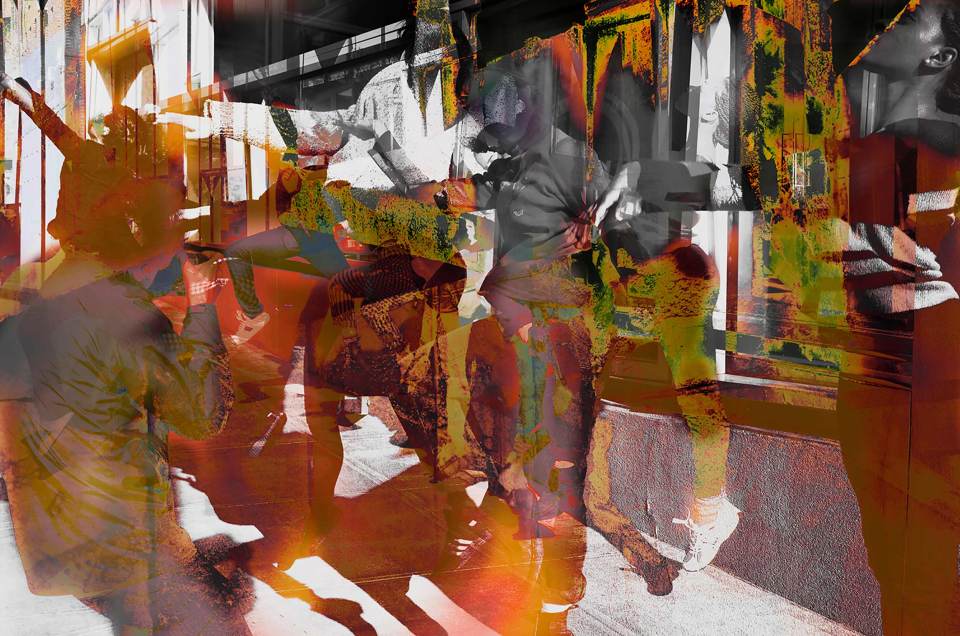As part of the Sustainable Prospects module of the Master of Arts, I’m collaborating with a group of fellow MA students on a ‘live brief’ for a company that develops unique design, information and wayfinding solutions to integrate people, movement and places.
Our collaboration on the Sustainable Prospects ‘live brief’ culminated in a pitch to our client on 20 November.

Fig.1 James Welling, 2016. ‘1538’, from the series Choreographs
My final contribution in the last stages of that collaborative effort was to inform our ideas through research into colour theory (Fig.1) and produce a conceptual image which visually expresses what it means to be human: that is, the capacity to think, decide, act, and to dream.
“Collecting images of work that you admire and keeping them in plain sight (on a pinboard, in a scrapbook, or even on your computer desktop) can be incredibly useful for boosting your own creativity.” [Fordham 2015: 86].
Collaboratively, we’d used this approach not to copy the work of other photographers, but to understand where artists are located in the development path of photographic thought, both technically and critically, or within different schools of photographic thought, so that our own collaborative work could contribute to that development.
How elements of other photographers work are emulated or incorporated into our own work is a valid artistic statement when applied in our own creative manner.
To produce my own visual contribution, I expanded a previous exploration of the concept of social capital by mining my back catalogue (photographic archive).

Fig. 2. Gordon Sutherland, 2019. Unpublished Photographic Sketch, archival blend from the series Market Values (2016)
Using two images from my 2016 series ‘Market Values’, I strove to express that agency in a smart city is not simply about having access to smart technology, but also about the use of that technology to choose and co-create the city that we want to live in (Fig. 2).
Rather than wayfinding, to get from one point to another, as a team we’ve considered these decisions in the context of human questions. What do I need to get done today? How do I want to enjoy myself? How can I be the co-creator off the city I live in? And when I want to get away from it all for a while, what do I dream of, and how do I get there before returning home again?
To anchor the visual storytelling in the future we’ve chosen to steer away from the trend of micro-storytelling around portraiture of individuals in their urban environment today. We suggest to move beyond that trend of ‘everydayness’ into an unknown space: the urban space that people dream of.
To do this we avoid introducing the viewer to individuals; preferring to allow the viewer to enter the image. They can imagine agency they posses in a place where they interact with others and also meet themselves.
Sources
Egeland, V. (2018) James Welling on his photo ‘1538’. Available at https://www.documentjournal.com/2018/06/james-welling-on-his-photo-1538/ [Accessed 10 November 2019]
Fordham, D. (2015) What they didn’t teach you in photo school: what you actually need to know to succeed in the industry. London: Octopus Publishing. ISBN 978-1-78157269-6
